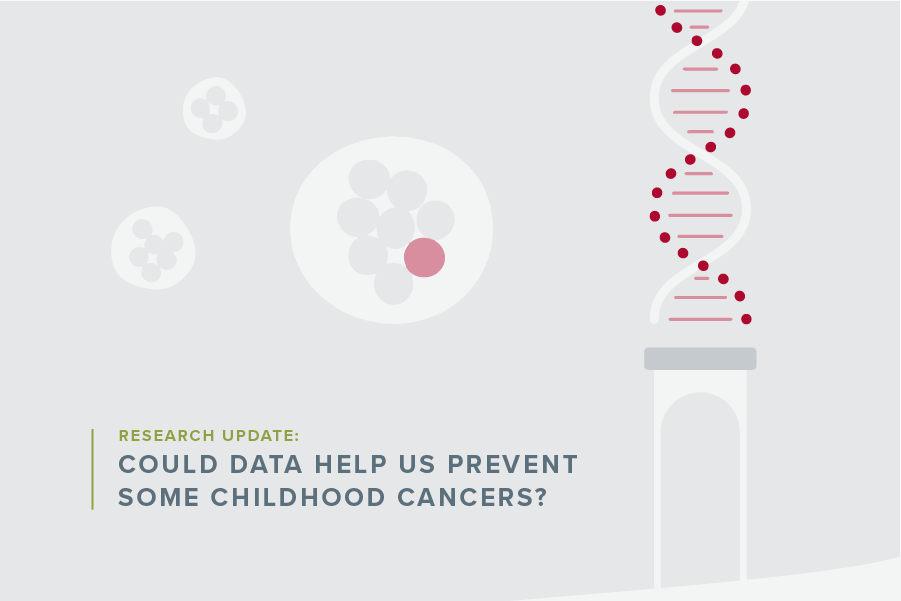CCRF's support of CLIC helps usher in a new era of childhood cancer discovery
Thanks to donations from supporters like you, the Childhood Cancer & Leukemia International Consortium (CLIC; www.clic.ngo) is ushering in a new era of childhood cancer research.
Through 40 completed and ongoing data pooling projects, they’re uncovering key findings in multiple childhood cancers using uniquely powerful data analyses. “I try not to oversell things, but I really am excited,” Logan Spector, PhD and Chair of CLIC said. “There are things that we can look at that no one else can. We’re the only organization that can examine the gene-by-environment interactions long suspected to underlie the causation of childhood cancer.”
Comprised of researchers from 19 countries, the consortium aims to answer one basic yet complex question: What causes childhood cancer? Their goal is to eventually prevent childhood cancer using their discoveries.
Your support has already helped CLIC uncover key findings about childhood leukemia cancer risk and causes in less than a decade including:
- Kids who entered daycare at young age have a lower risk of getting acute lymphoblastic leukemia (ALL). “Daycare is a reliable proxy for infectious exposure,” Spector said.
- Regular contact with livestock (cattle, pigs, and sheep) or pets (cats and dogs) in the first year of life decreased the risk of later childhood ALL.
- Children of mothers who drank more than one cup of coffee per day during pregnancy have an increased risk of AML.
Beginning with leukemia research, the consortium has successfully laid the groundwork to explore solid tumor cancers, an effort kickstarted in part by CCRF funding. “We’re pooling the genomic data so we can make these really powerful analyses,” Spector said. He adds that they should have joint epidemiological and genomic data for about 12,000 leukemia patients and 8,000 solid tumor patients when they are finished. The next childhood cancers on the table include neuroblastoma, hepatoblastoma and retinoblastoma.
How CLIC is changing childhood cancer research
To understand how CLIC is creating a new era of research, it’s important to know how childhood cancer has been investigated in the past.
Genomic data (everything that has to do with genes) on patients and their tumors have typically been generated by clinical studies, since it is critical to understand how a disease works. However, genomic data alone provides a limited view of what could be causing cancer in a patient’s body and why.
Epidemiological data is information about one’s exposures and environment, like type of residence, what their parents do for a living, where a patient spends most of their time and more. Think of this data as information about a patient’s surroundings and environment.
In the past, genomic and epidemiological data had been gathered and analyzed separately due to several research barriers, restricting the answers researchers could find about childhood cancer.
If a researcher wanted to investigate a question like “Does a parent’s exposure to a certain chemical cause cancer?” it would require both epidemiological and genomic data that they would have to locate, gather and analyze on their own. For rare diseases like childhood cancer, the data is hard to come by, making this a time-intensive and expensive process. “Sometimes it takes two years for people to send data,” Spector said.
Within the consortium, 39 principal investigators from multiple disciplines collaborate to create rich pictures of what’s surrounding cancer patients, what’s happening internally and how it could all be connected. They also keep all of their data in one central place, the Data Coordination Center located at the International Agency for Research on Cancer in Lyon, France.
Spector describes CLIC's data-pooling work and joint analysis like mixing chocolate and peanut butter together. “[Researchers] have been working with chocolate and peanut butter separately, but now we have a delicious peanut butter cup that no one has ever been able to make before.”
From proposal to approval to data in hand, Spector said the data gathering process is now closer to five to six months.
By leveraging funding from organizations like CCRF, Spector was able to obtain funding from the National Institutes of Health (NIH.) “The fact that I could point to the CCRF grant to help get the pooling started showed that our research wasn’t a distant prospect,” he said, “I think that helped give the NIH confidence. I’m hugely appreciative of CCRF’s early investment.”
He also notes that because its genomic data are derived from diverse populations, CLIC also is one of few organizations that can examine genetic risks for pediatric cancer in non-European populations.
With more funding comes more discoveries and better answers to childhood cancer causes for all kids. Spector’s long-term goal is to prevent at least some childhood cancers from happening in the first place, and thanks to help from supporters like you and groups like CLIC, he believes it’s possible.
Your donation funds scientists like Spector.
Your support propels bold ideas forward and empowers researchers to discover treatments that are better and safer for kids, and ensure every child can have a long, healthy life after cancer.




